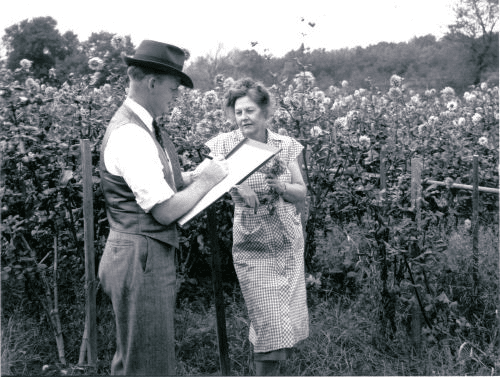You’ve probably received a notice in the mail asking you to complete the 2020 United States census. Completing this document is a great task to compete with while you’re homebound and will serve as a valuable resource for your future family members’ genealogy research.
The U.S. Constitution mandates that a national census be completed every 10 years. The first census was taken in 1790 under the direction of President George Washington. This information helps determine congressional districts, shape a community’s emergency preparedness strategy and accurately informs public policy. In addition, the census ensures that each community gets its fair share of federal funds spent on schools, hospitals, roads and other vital programs.
Beyond this, the census also serves as a tremendously useful tool in family history research that offers a treasure trove of information.
Census records are a snapshot in time of a county, city or neighborhood. These records will show the name of the head of the household, names of other family members, their ages, birthplaces and their occupations. This data offers helpful clues that will lead you to even more records to uncover.
Over the last 230 years, the U.S. census has evolved. For example, from 1790—1840, the census only required the name of the head of a household, and didn’t include listings of other family members. This can cause roadblocks in genealogy research.
Beginning in 1850, the census lists the names of all people living in a household. You can also see whether or not a family member was married and for how long. This info can lead you to further research with other records like marriage certificates.
If family lore has it that your ancestors came from overseas and your family members completed the 1920 census, it will tell you the year that they immigrated to this country, and, if they became naturalized citizens, it will show the year of their naturalization. Naturalization records offer even more pieces of the research puzzle.
For privacy reasons, there’s a 72-year period from when a census is taken and when the information is available to the public. Your future family members will likely get access to your census data in the year 2092. If you complete the census today, your family will learn about the type of home you lived in, who lived with you and their relationship to you. All these pieces of information are important in genealogy research and provide vital links to understanding the past.
You can find many census records online for free. If you have an Ohio library card, you can use the Ohio Public Library Information Network to access census records from 1790-1940. Get this info via Ancestry.org: https://ohioweblibrary.org/db/ancestry. Another database, FamilySearch, also offers family history records.
While you research your genealogy, you can also take this time to connect with family members and consider collecting oral histories. Oral histories are a fantastic resource for curators and family historians alike—they are primary sources that allow us to better understand a particular time in a community’s history. You can do this by phone or even video call, and it’s a great activity for kids to do with grandparents and other relatives while social distancing.

And now, more than ever, we appreciate your support of this vital work in our community. If you can, please consider donating so that we can continue to provide state of the art resources to you and all Ohioans. You can do that here.
Thank you for your consideration!
Do you have a story to share? Right now, our team is documenting how Ohioans are experiencing today’s historic pandemic. As Ohio’s public history organization, the stories you share with us will help us understand the day-to-day impacts of COVID-19.
If you have images, videos, objects or a personal story to share, click here to learn how you can contribute.